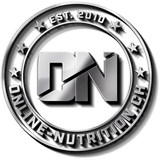Looking for a complete workout routine to fit your needs? This training plan will help you find a program that is just right for you based on your age, gender, and goals.
Things You Should Know About TDEE
Calculating your TDEE gives you a good indicator of how many calories you burn. This gives you an idea of how many calories you need to consume so you can maintain your current weight.
This number is pretty important because it is somewhat tailored to you by your BMR and your specific activity levels — calculating your BMR takes into account your sex, height, weight, and age. To find your TDEE, that number is then multiplied by a constant that represents an activity level. Fortunately, you can simply plug your numbers into the calculator and it will take care of the rest.
Knowing your TDEE is great, but there are a few things you should know about it.
#1 - Your Daily Activity Levels
An important aspect of calculating your TDEE is your activity levels. The more activity you perform daily, the higher of a number your BMR is multiplied by. The problem is many people overestimate their activity levels.
This is why it's important to evaluate your activity levels outside of what is carried out in the gym. When it comes to choosing sedentary versus a moderate activity level, there isn't a specific difference between the two — and that can make it tricky. The important part about choosing your activity levels on the calculator is being real with yourself. If you have an easy job, go home and relax on the couch to play video games, and then hit the gym... you're still somewhat sedentary.
Just because you go beast mode in the gym doesn't mean you are a highly active person.
#2 - Your Exercise Intensity
Another important factor in calculating your daily energy expenditure is your exercise intensity. This is where you take into account all of the activities performed at the gym. There is a big difference between moderate and intense activity, so you need to be careful when choosing your intensity levels.
Choosing the wrong one will lead to an over-estimation of how many calories you burn and will slow your progress towards your fitness goals.
#3 - You Need to Work Up to It
One thing that helps you lose weight is easing into your plan. If you want to effectively lose weight, you should start by logging your food and consistently hitting your TDEE for a few weeks before you start reducing calories.
This allows you and your body to get conditioned to eat a certain level before you start eating less. This process may seem counter-intuitive, but it is easier to getting conditioned to eating your current calories consistently than it is jumping into what will feel like a restrictive diet. You will be more consistent and you'll be able to modify your intake much easier.
The same goes for those wanting to bulk. Personally, it is easier to eat more food than it is to eat less food, but consistency is key to losing fat or building muscle.
Once you have consistently hit your calories for a few weeks, it's time to start manipulating calories.
For weight loss, start by removing 250 calories from your diet for two weeks, and after that another 250 calories for a total of 500 calories lower than the TDEE you calculated. For building muscle, start by adding 150 calories from your diet for two weeks, and after that another 150 calories for a total of 300 calories lower than the TDEE you calculated. The slow removal or addition of calories helps ease you into your plan.
Once you have successfully eased into a 500 calorie deficit or a 300 calorie surplus, it's time to recalculate your TDEE and see your progress.
#4 - Weight Loss is About Balance
Losing weight is about fueling your body with the fuel it needs to run. Once you know your TDEE you know how many calories you need to eat to maintain weight, lose weight, or build muscle. In order to lose weight, you'll need to eat less, exercise more, or both. In order to build muscle, you'll need to eat more, and lift weights.
Your TDEE is what your body needs to work in order to keep your basic functions going while you perform physical activity. Drastically reducing your calories to the point your body doesn't have the fuel it needs won't help you at all. This will slow the process, cause damage, and could result in an unhealthy lifestyle.
Knowing your TDEE gives you the tools to lose weight, build muscle, or maintain your weight. You're essentially taking the guesswork out of achieving your personal fitness goals.
Use it wisely and you can create a sustainable healthy lifestyle you enjoy.

